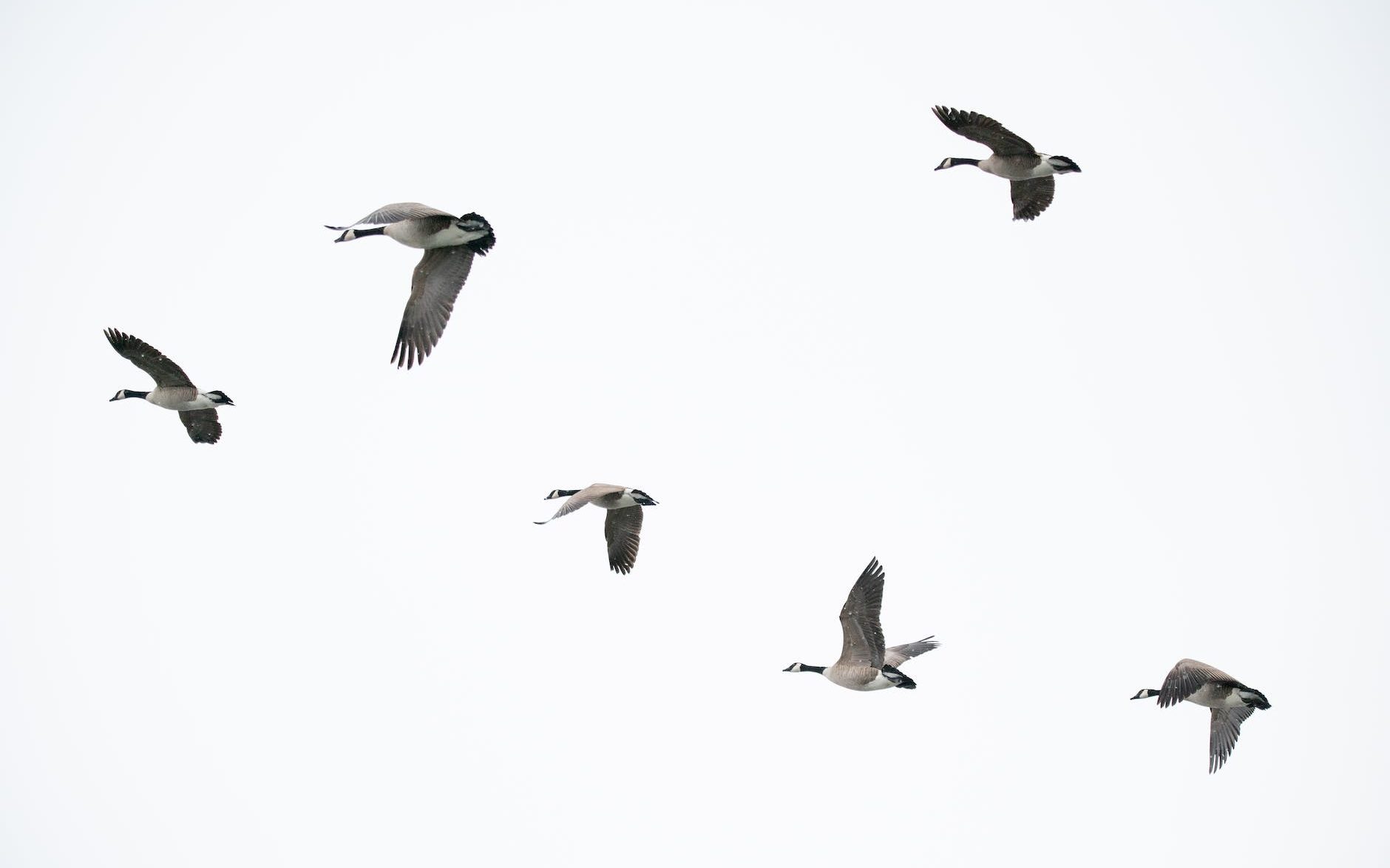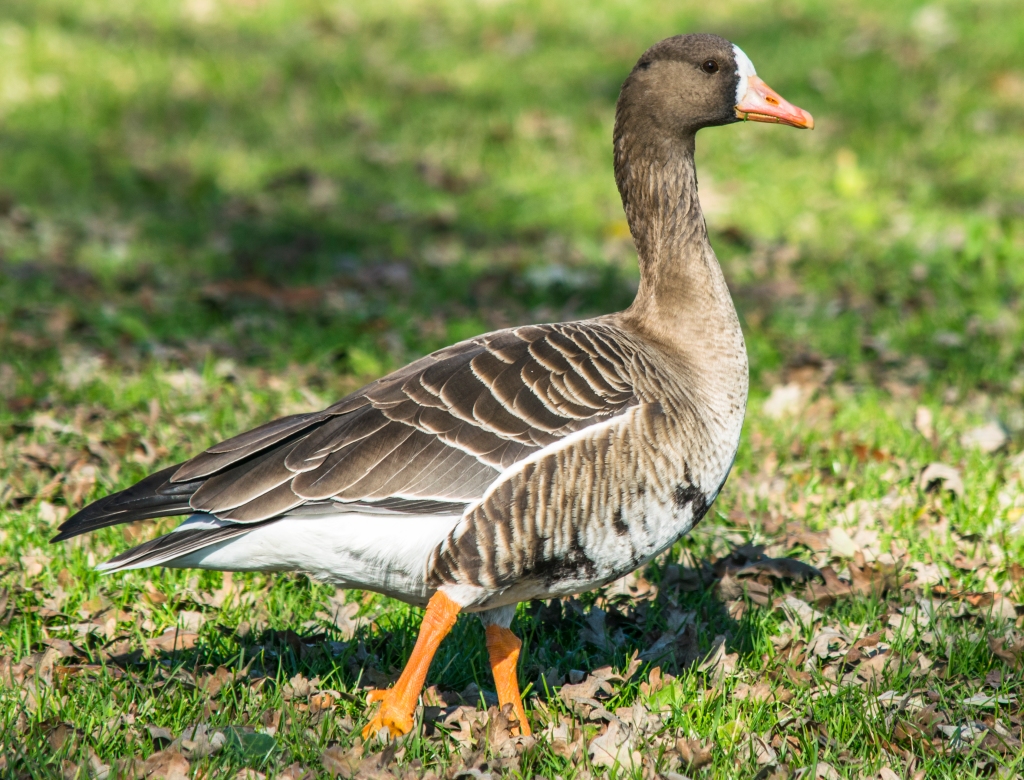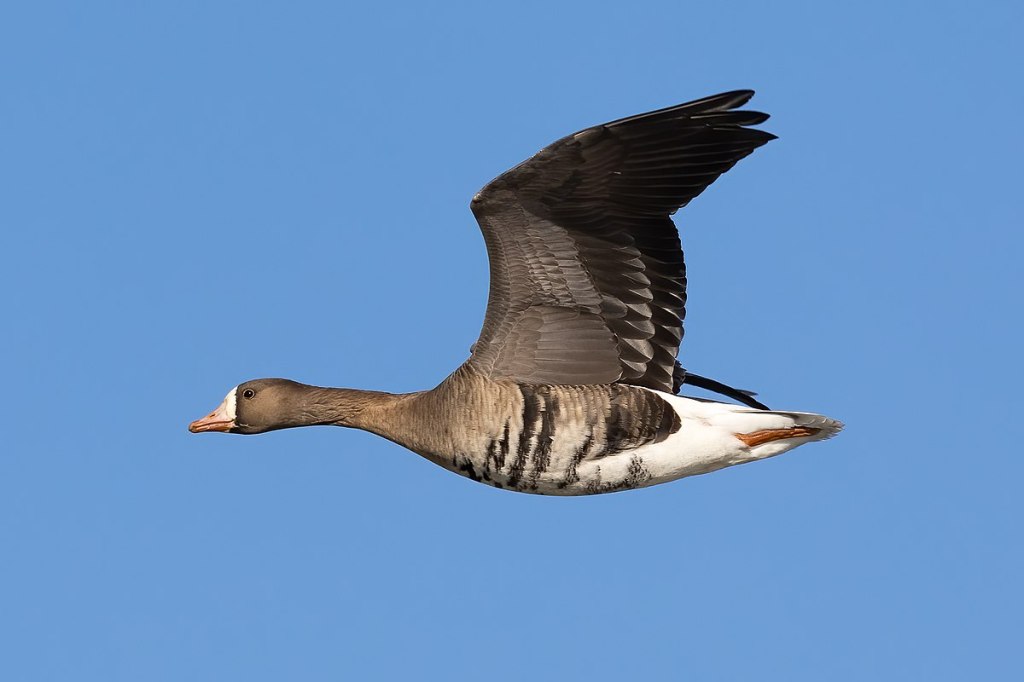We have entered the micro-season of “The Geese Arrive”. This is the first micro-season of the mini-season of Cold Dew. The micro-seasons within Cold Dew are:
- The Geese Arrive (Oct 08 – Oct 12)
- The Chrysanthemum Flowers (Oct 13 – Oct 17)
- The Grasshopper Sings (Oct 18 – Oct 22)
These seasons were established in 1685 by Japanese astronomer Shibuka Shunkai and are specific to Japan. However, just because the calendar focuses on Japan doesn’t mean it isn’t applicable to others. No matter where you live you can use these seasons as a starting point for your personal exploration of the world around you.
As a way to celebrate this season, we will learn about the White-Fronted Goose and then read haiku by Issa, Basho, Takaha Shugyo, and Buson.
“The Geese Arrive” (Oct 08 – Oct 12) is a counter-season to “The Geese Fly North” (Apr 9 – Apr 13). These two micro-seasons highlight the seasonal patterns of bird migration.
This micro-season is also opposite to my personal experience in the Northeast of the United States. In the Northeast, the geese leave and head south in autumn and return in the spring. For those people living in more southern areas, this pattern would be reversed.
What is Bird Migration?
At its most basic form, bird migration describes the seasonal movement of a bird species. There are a variety of factors that contribute to bird migration including the availability of food, breeding grounds, genetics, the length of daylight, and temperature changes.
The distances birds migrate can also vary greatly. Some birds participate in short-range migration, which is less than 100 miles. While others participate in mid-range or long-range migration. Mid-range migration is usually a few hundred miles, while long-range can be several hundred miles.(1) Geese often participate in long-range migration.

The White-Fronted Goose
The White-Fronted Goose makes up 90% of the geese found in Japan.(2) In late September and early October, the white-fronted geese migrated from their summer residence in Siberia to their winter residence in Japan. The geese will make their homes in marshes and rice paddies where they forage for fallen rice grains. They usually stay in Japan until late March or early April.
White-fronted geese are divided into two separate sub-species: Greater White-Fronted Geese (Anser albifrons) and Lesser White-Fronted Geese (Anser erythropus).(3) Both species can be seen in Japan. However, a majority of them are Greater White-fronted Geese.
Greater White-Fronted Goose
The Greater White-Fronted Goose is described as a medium-sized, heavy-bodied bird with stocky legs, a small bill, and a short neck.(4) These birds average about 25.2-31.9 in (64-81 cm) in length and can have a wingspan of about 53.1 in (135 cm). The adult birds are “mostly brown with white feathering around the base of a pinkish-orange bill. Black barring marks the belly and the under tail is white.”(4) While the birds are flying, an observer can see a white “U” at the base of the tail. When the birds are standing still, an observer will be able to see a thin white line that goes across their side. The Greater White-Fronted Goose has orange legs.
Lesser White-Fronted Goose
The Lesser White-Fronted goose is similar to the Greater White-Fronted Goose but smaller and more compact. This goose averages about 21–26 in (53–66 cm) in length with a wingspan of about 47–53 in (120–135 cm).(5) This goose is also described as having “a rather oval, ‘high-crowned’ head with a steep forehead . . . and relatively long wings which project well beyond the tail-tip.”(3) These geese may also move more rapidly than the larger birds. This rapid movement can also be used to help determine the difference between the Greater and Lesser species.(3)
Interesting Facts About the White-Fronted Goose
The following interesting facts were found at AllAboutBirds.org
- Greater White-fronted Goose pairs stay together for years and migrate together, along with their offspring. White-fronted Goose family bonds can last longer than in most geese, and some young stay with their parents through the next breeding season. Parent and sibling associations may continue throughout their lives.
- Before migrating north, female Greater White-fronted Geese gain 30% more weight to fuel migration and egg production.
- The oldest recorded Greater White-fronted Goose was at least 25 years and 6 months old when it was found in Louisiana in 1998. It had been banded in Nunavut in 1975.
To learn more about the Greater White-Fronted Goose visit AllAboutBirds.org

Seasonal Haiku
The World Kigo Database tells us that “Migratory Birds” or “wataridori” is an autumn kigo. Richard Gilbert further explains in ‘Kigo Essay by Gilbert” that “‘migratory birds’, is an autumn kigo in part because migrating birds arrive in Japan from Siberia to winter. They also depart in the spring, but in the culture of kigo, migrating birds migrate only one way, in one season, as far as the kigo wataridori is concerned.”(7) With this in mind, let’s read some haiku that focus on migratory geese.
Issa
birds heading south unfazed even when they're getting bawled out (translated by Chris Drake)
from this day forth, geese, you are Japanese. now enjoy your rest. (unknown translator)
autumn's first geese-- from you I could learn about travels! (translated by David G. Lanoue)
Basho
the sea darkening, the voices of the wild geese: my mysterious companions! (Translated by Michael R. Burch)
Takaha Shugyo
geese seem to be flying south— the candle’s flame continues to flicker (Translated by Tsunehiko Hoshino and Adrian Pinnington)
wild geese pass leaving the emptiness of heaven revealed (Translated by Michael R. Burch)
Buson
calligraphy of geese
against the sky—
the moon seals it.
(Translated by Robert Hass)
A Haiku Invitation
This week’s haiku invitation is to write a haiku or senryu that references geese or bird migration.
Share your haiku in the comments below, or post on your own page and link back to this post. I can’t wait to read what you write!

Resources:
- AllAboutBirds: The Basics Of Bird Migration
- Ishi Hiroyuki; “The Flight of the Wild Geese”: Nippon.com
- “Greater and Lesser White-fronted Geese photo ID guide”; Birdguides.com
- “Greater White-Fronted Goose”; AllAboutBirds.org
- “Lesser White-Fronted Goose”; Wikipedia
- “Migrating Birds (wataridori)”; World Kigo Database
- Richard Gilbert “Kigo Essay by Gilbert”; World Kigo Database
Issa’s haiku were retrieved from the World Kigo Database, “The Flight of the Wild Geese” by Ishi Hiroyuki, and David G. Lanoue’s Haiku Guy. Basho’s haiku were retrieved from “Matsuo Basho’s Famous Frog Poem and other Modern English Translations of the Japanese Haiku Master”. Takaha Shugyo’s haiku were retrieved from “Wild Geese-Brief Poems by Takaha Shugyo”. Buson’s haiku retrieved from “Calligraphy of geese by Yosa Buson”
Want to support our work? Visit the Naturalist Weekly bookstore and browse our curated lists of books of poetry and haiku. Or pick up a gift card that can be used throughout the store.
Naturalist Weekly accepts donations for coffee and journals.
Great choices for the haiku.
“Calligraphy of geese against the sky”
Thanks! I really enjoyed that haiku too. Have a great weekend!
Reblogged this on Art, Music, Photography, Poetry and Quotations.
So lovely bird’s photos to view 🌷🙏👍🏻 winter time so many birds migrating to Malaysia for survival 🦅
Have a nice weekend 🌷🙏♥️🌷
Hi Thattamma, Thanks for the comment and it must be exciting to see all the migrating birds arrive. I hope all is well!
All birds nicely giving protection here ,bird’s paradise place 🦅👌👍🏻
Thank you so much and most welcome 🌷🙏♥️🌷
Thanks, Mark, for another great post and writing challenge. Here is my response to this week’s prompt ‘Geese / Bird Migration’.
Happy Saturday Folks.
Hi Goff, I am glad you liked this one and I can’t wait to head over to your site and see what you came up with!
Thanks Mark.
A fascinating post.
Thank you.
Thanks Sue, I am glad that you enjoyed it!
forming the V–
the lead goose honks
to move sluggish wings
~Nancy Brady, 2022
http://www.nbsmithblog.wordpress.com
Hi Nancy, Thanks for sharing this! I like the use of honk and its potential dual meaning. Well done.
Thanks Mark S; your comment is appreciated. That honks has a dual meaning is just coincidental; glad you saw something I didn’t.
Another great post, Mark, thank you. You might like Mary Oliver’s poem Wild Geese, one of my own all time favourites! 🙋♂️
Hi Ashley, Yes I do like that one. I have it featured on one of my older posts, “Poems about Geese”. I hope all is well! Talk soon!
Aren’t geese just wonderful so full of character!
What a great haiku! Thanks for sharing and linking back.
you are welcome
Don’t have my own, but wanted to say I love this one:
calligraphy of geese
against the sky—
the moon seals it.
Hi Tracy, I would agree with that! That haiku is one of my favorites from this series. Have a good week and good luck with writing the synopsis!
Thank you, Mark!
Lovely, Mark! One of the fun things the Millennial generation has come up with is referring to geese as “Cobra Chickens.” I love it! They really can be quite mean sometimes and with the extended neck, the nickname is perfect! Other favorites include snakes as “danger noodles” and big cats have “murder mittens.” Have a great day!
Hi Melanie, I have never heard of that before. I really like the “danger noodles”! I think that needs to find its way into a haiku. Murder mittens has a nice ring to it too.
Thank you so much for sharing! That made my morning.
Always so comprehensive Mark. Love it and am always sad to see them go!
❤️
Hi Cindy, thank you! I am glad that you enjoyed this post.
You’re always welcome Mark! 💗